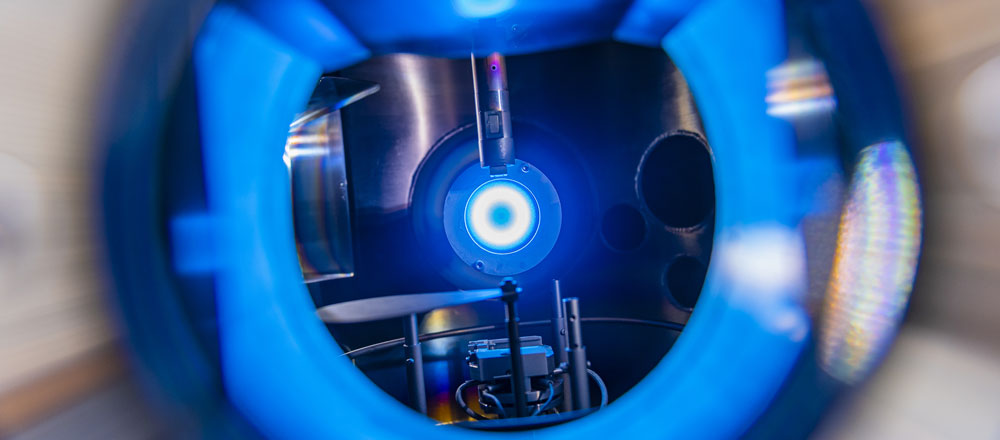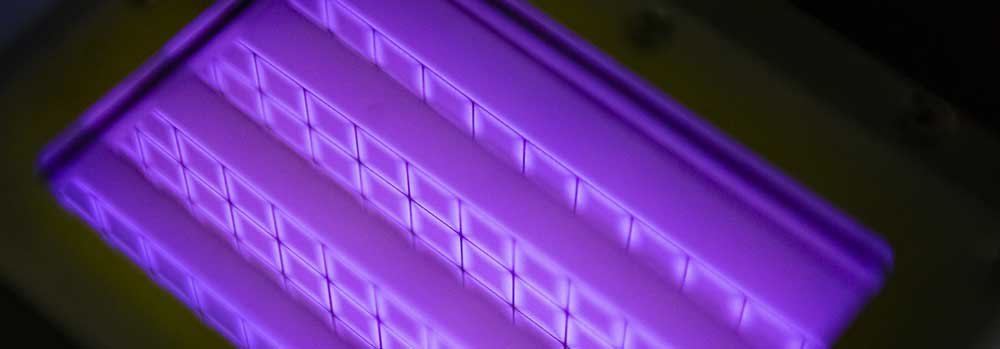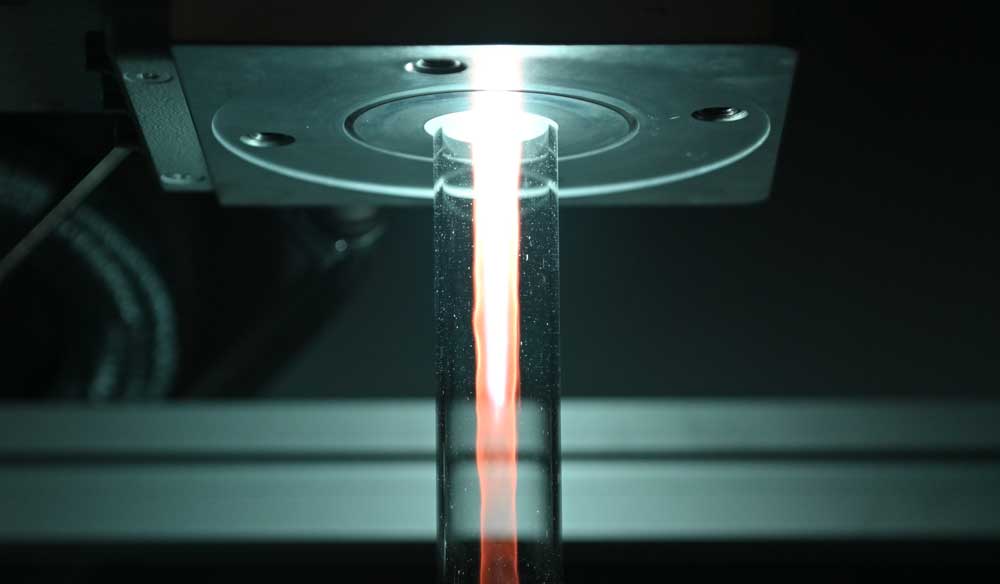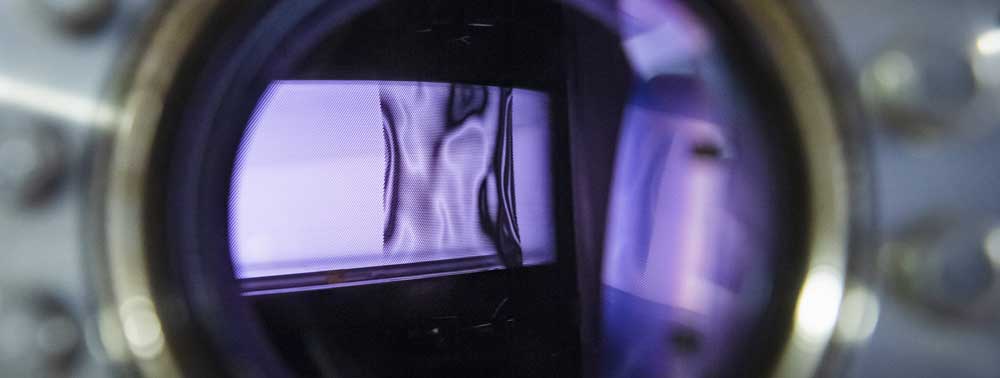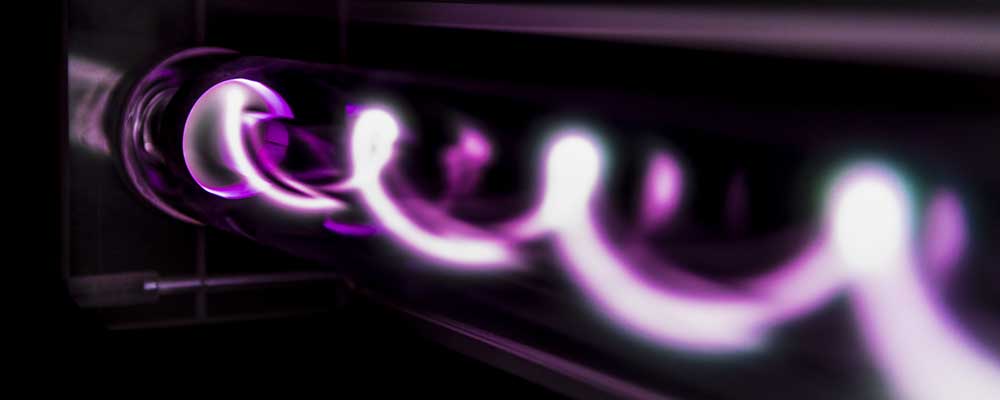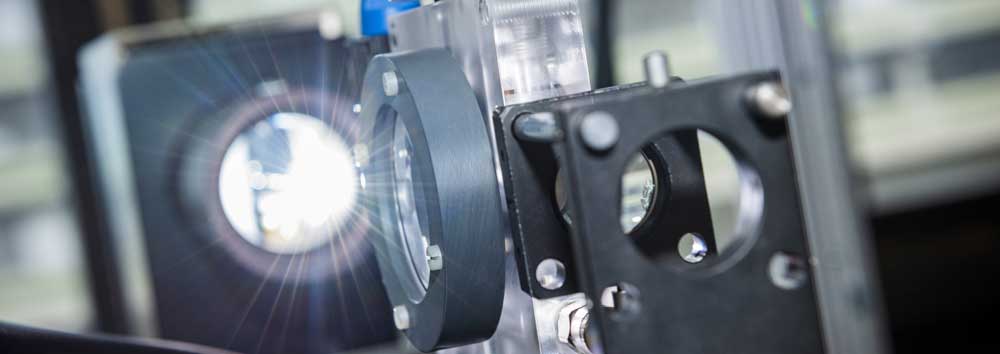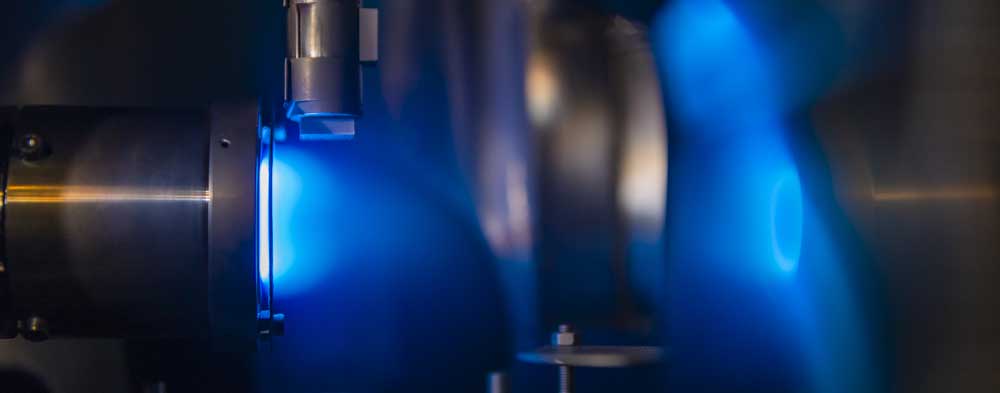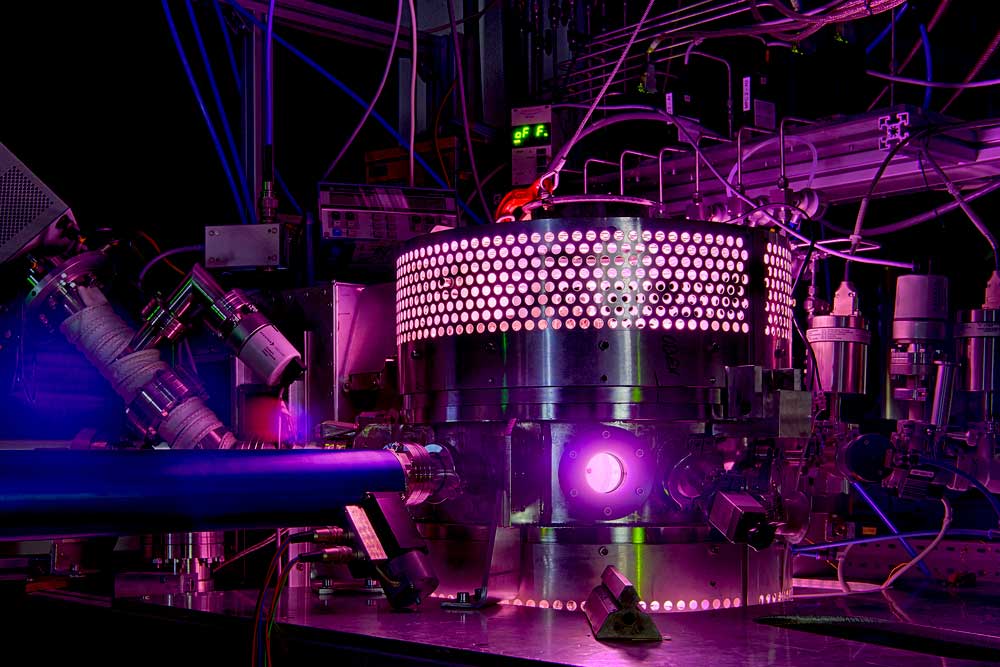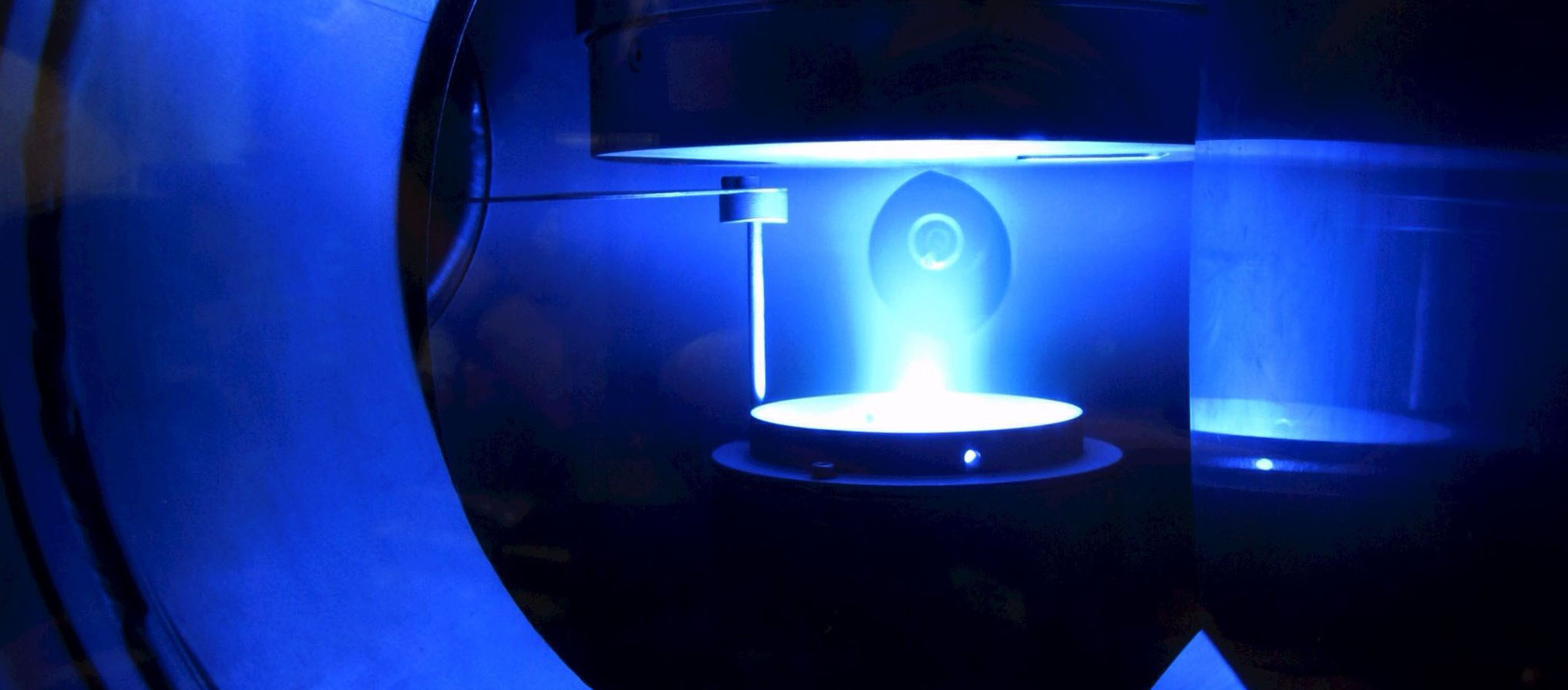FACULTY OF Electrical Engineering and Information technology
PROF. DR. PETER AWAKOWICZ, CHAIR FOR ELECTRICAL ENGINEERING AND PLASMA TECHNOLOGY
A diverse spectrum of research is addressed. It includes atmospheric pressure plasmas combined with catalysts for air and gas purification (e.g., CRC 1316, Carbon2Chem) or atmospheric pressure plasmas for the deposition of light metal oxides. Furthermore, atmospheric pressure plasmas for disinfection and sterilisation, wound healing, cancer treatment (PlasNow) are investigated. Another research focus are low pressure plasmas for deposition of SiO2 layers on plastics for barrier and membrane applications or Low-pressure plasmas for the deposition of metal oxynitrides (SFB-TR 87). Finally, quantitative plasma diagnostics with optical, mass spectrometric and electrical methods realized within the research institute.
Keywords: Electrical engineering, low pressure plasmas, atmospheric pressure plasmas, plasma deposition
Webpage: Chair of Electrical Engineeringd and Plasma Technology
FACULTY OF Physics and Astronomy
PD DR. DOMINIK BOMANS, ASTRONOMICAL INSTITUTE
The research is focused on astrophysical plasma in interstellar and intergalactic space. Using multi-wavelength (UV, optical, IR, radio, and X-ray) space and ground based photometry and spectroscopy the physical state of the plasma is determined. This gives the ionization, heating, cooling, heavy element content, magnetization, and kin-ematics of the astrophysical plasma. With these measurements the stellar (radiative and mechanical) feedback on various spatial scales, from circumstellar to circumgalactic and intergalactic medium, can be determined. The analyses provide essential physical parameters for the understanding of dwarf and massive galaxy formation and evolution.
Keywords: interstellar plasma, circum/intergalactic plasma, magnetized astrophysical plasma, stellar feedback, galaxy evolution
Webpage: Astronomical Institute
FACULTY OF Physics and Astronomy
PROF. DR. RALF-JÜRGEN DETTMAR, ASTRONOMIC INSTITUTE
Research projects at the chair of astronomy focus on studying the physics of the magnetized interstellar medium and its role in the evolution of galaxies. Emission line spectroscopy at optical and X-ray wavelengths is used to characterize the properties of the diffuse gas in galactic halos while radio-continuum polarization studies of the non-thermal synchrotron emission allow to describe properties of galactic magnetic fields such as field strength and structure. The combination of the methods provides inside into the physical condition of galactic halos ad-dressing the large scale circulation of matter between star-forming galactic disks and the so-called “circumgalactic medium”. In this context, one station of the international LOw Frequency ARray radiotelesope (LOFAR) is operated together with FZ Jülich.
Keywords: plasma-astrophysics, plasma diagnostics, emission line spectroscopy, radio polarimetry, interstellar medi-um physics, galactic magnetic fields, LOFAR
Webpage: Astronomical Institute
Faculty of Physics and Astronomy
PD DR. HORST FICHTNER, CHAIR OF THEORETICAL PHYSICS IV
The research is mainly focused on the acceleration and propagation of non-thermal particle populations and on fluctuations in high-temperature plasmas. Regarding the first topic the activities comprise the theory of newly introduced regularized kappa distributions for the treatment of suprathermal particles, an analysis of nonlinear diffusive shock acceleration of intermediate-energy cosmic rays, and the propagation of high-energy cosmic ray particles in the direct vicinity of the Sun. With respect to the second topic, the transport of fluctuations in the sub-sonic plasma in the so-called inner helisosheath of the heliosphere is studied as well as the wave-driving of the solar wind within the solar corona. The corresponding frameworks reach from the equations of motions of indi-vidual particles, via kinetic transport equations for distributions functions, to the magnetohydrodynamic fluid modelling of their velocity moments.
Keywords: space and astrophysical plasmas, kinetic theory, magnetohydrodynamics, plasma fluctuations
Webpage: Theoretical Physics IV
FACULTY OF Physics and Astronomy
PROF. DR. ANDREAS WIECK, CHAIR FOR APPLIED SOLID STATE PHYSICS
Andreas Wieck is the director of the Institute of Experimental Physics and professor in the Department for Physics and Astronomy at RUB, holding since 1993 the Chair of Applied Solid State Physics. He performs Molecular Beam Epitaxy in ultra-high vacuum of IIIV-compounds as AlxGa1-xAs and InyGa1-yAs with thicknesses of sub-atomic layers up to 10µm, using band-gap engineering and dopants as Si and C to create on 3”-wafers High-Electron-Mobility-Transistors, Quantum Wells and Quantum Dots to produce light emitting diodes, laser diodes, transistors and single photon sources for quantum informatics and cryptography. He pioneered Focused Ion Beams for mask-less doping and sputtering. Andreas obtained his PhD with experiments at the High-Field Magnet Laboratory in Grenoble/France at the University of Hamburg, was 8 years tenure researcher at the Max-Planck-Institute for Sol-id-State-Research/Stuttgart and 1 year at the NTT Basic Research Labs in Tokyo/Japan before joining RUB.
Keywords: Molecular Beam Epitaxy, Quantum Dots, Focused Ion Beams
Webpage: Theoretical Physics VI
Faculty of Physics and Astronomy
DR. JÜRGEN DREHER, CHAIR OF THEORETICAL PHYSICS I
Dr Jürgen Dreher is expert in theoretical plasma physics with emphasis on magnetized plasmas. He has studied various phenomena in the magnetosphere/ ionosphere system and the solar atmosphere, with special focus on magnetic reconnection. Combining theoretical modelling and numerical simulation, he has also been involved in the analysis of the Bochum "FlareLab" experiment. Dr. Dreher has created the mesh-adaptive, massively-parallel simulation framework "racoon," which was employed in numerous plasma physical projects. Recently, he has been working on adopting those techniques and numerical methods to the field of cardiac electrophysiology.
Keywords: Plasma and fluid theory, Space plasma physics, Numerical methods and code development, Large-scale numerical simulation
Webpage: Theoretical Physics I
FACULTY OF Physics and Astronomy
PROF. DR. RAINER GRAUER, THEORETICAL PHYSICS I
The main interests of TP I are, on the one side, the development of multiphysics/multiscale simulations of colli-sionless plasmas and, on the other side, the understanding of intermittency in turbulent fluids and plasmas using non-perturbative methods. The first topic addresses the occurrence of multiple temporal and spatial scales in collisionless fusion, space, and astrophysical plasmas, which require different physical models at different scales. These models range from magnetohydrodynamics/Ohm's law (on large scales), two fluids/Maxwell to a kinetic description using the Vlasov/Maxwell system. The specialty of our group is the development of multiphysics/multiscale simulations that adaptively decide in which spatial region which model is appropriate, as well as coupled simulations of these different models. In the latter area, our group focuses on the non-perturbative in-stanton calculus to develop approximations to the path integral formulation of turbulence.
Keywords: multiphysics/multiscale simulations, MHD, Vlasov, turbulence and instantons, intermittency
Webpage: Theoretical Physics I
